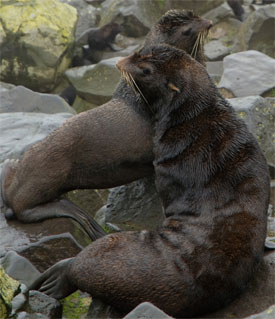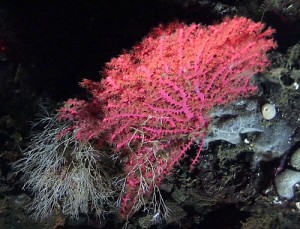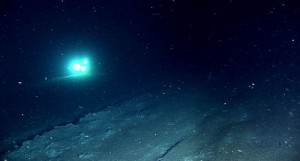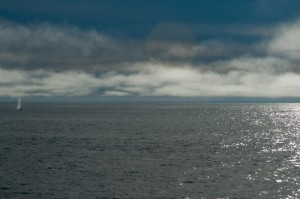
The Esperanza crew had an opportunity for a brief shore leave on St. Paul Island on Friday (August 3) before steaming north to Zhemchug Canyon. On St. Paul, they visited a fur seal rookery. Populations of fur seals are down dramatically.
(Photo by David E. Guggenheim)
Continued favorable weather and few mechanical problems means that the team aboard Esperanza has been able to complete 14 manned submersible dives at Pribilof Canyon. On Saturday (August 4), Esperanza arrived at Zhemchug Canyon to explore this, the largest undersea canyon in the world, much larger than the Grand Canyon. Within the first few minutes of the deepest ROV dive yet, more than 3,000 feet down, the team discovered corals, including pink “bubblegum” corals along with other soft corals.
Earlier, during the final dives at Pribilof Canyon, the team documented numerous corals, but also evidence of extensive trawling damage in the area.
The Esperanza is carrying two manned submersibles, a remotely-operated vehicle (ROV) and an international research team to the Bering Sea for a three week survey of Zhemchug and Pribilof Canyons,to map and document deepwater corals living at depths of more than 1,000 feet. The expedition was conceived of and is being led by Greenpeace.
Read more







